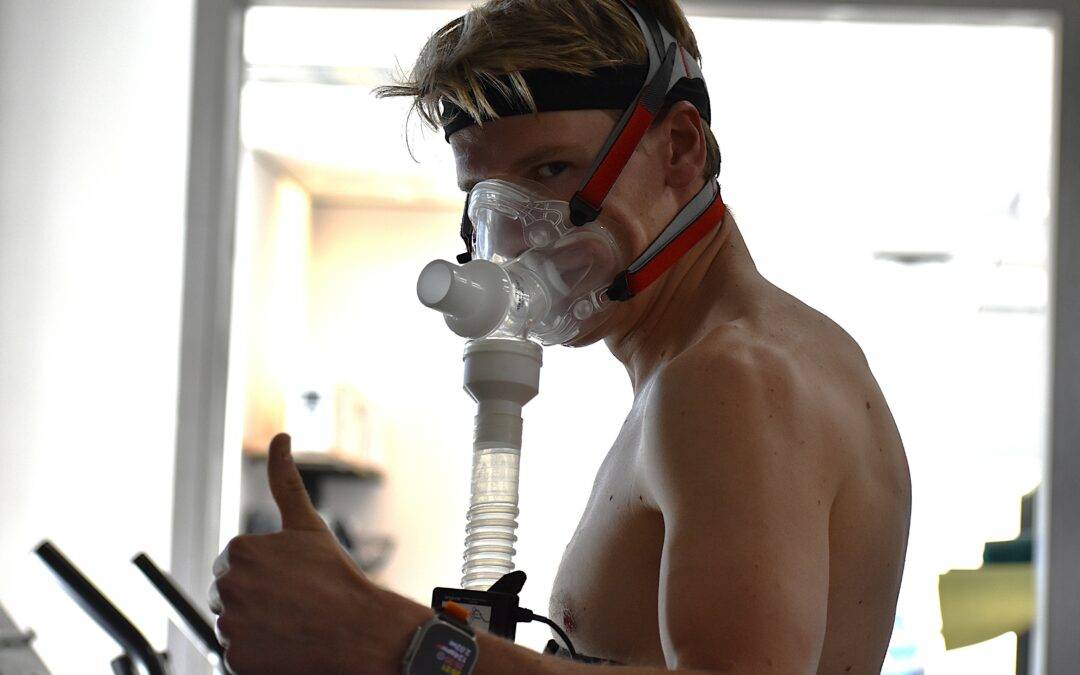
Unlocking the Power of Your Body’s Engine: The Oxidative Energy System and Why It Matters
When we think about improving our health, we often focus on things like diet, sleep, or resistance training. But there’s a lesser-known powerhouse system in your body that might be the strongest predictor of how long and well you live: your oxidative energy system, also known as aerobic metabolism. This article breaks down what it is, how it works, and why it’s one of the most important parts of your health to develop—especially if you’re aiming to reduce your risk for chronic disease and live a long, functional life.
What is the Oxidative Energy System?
The oxidative energy system is your body’s primary method for creating energy (ATP) during activities that last longer than a couple of minutes, like walking, jogging, cycling, or even deep breathing. It’s called “oxidative” because it uses oxygen to convert fuels (like fat and glucose) into usable energy. It’s incredibly efficient—and foundational to your ability to move and recover.
Key Term: ATP
ATP (adenosine triphosphate) is the basic energy currency of your cells. It powers everything your body does—from muscle contraction to brain activity.
Step-by-Step: How the Oxidative Energy System Works
Here’s a breakdown of the science of how your body makes energy through this system; take a deep breath 🙂
1. ATP Demand Increases
When you start a moderate-intensity activity, your muscles demand more ATP. The body responds by turning on its most efficient energy production system: oxidative metabolism.
2. Fuel Mobilization
Your body pulls from two main energy sources:
- Glucose from your blood or stored as glycogen in muscles and liver
- Fatty acids from stored fat
Hormonal Helpers:
- Insulin decreases, allowing fat to be used for energy
- Catecholamines (adrenaline/noradrenaline) increase, breaking down stored fat
- Glucagon rises to help release glucose from storage
3. Mitochondrial Processing
Fats and glucose are sent to your cells’ mitochondria—the “power plants” of your cells.
- Glucose becomes pyruvate through glycolysis, then gets converted to acetyl-CoA
- Fatty acids enter the mitochondria through a shuttle system (CPT1) and undergo beta-oxidation, which also produces acetyl-CoA
4. Krebs Cycle (Citric Acid Cycle)
Inside the mitochondria, acetyl-CoA enters a complex loop called the Krebs cycle, where it’s broken down further to release high-energy molecules:
- NADH and FADH2, which are crucial for the next step
- CO2 as waste
5. Electron Transport Chain & Oxidative Phosphorylation
Those NADH and FADH2 molecules donate electrons to a chain of proteins (called the electron transport chain) in the mitochondria’s inner membrane. This chain pumps protons to create a pressure gradient, which is then used by ATP synthase (another protein) to generate ATP.
Oxygen is the final player—it grabs the electrons at the end of the chain and forms water. No oxygen? No ATP.
Recap:
Fats and carbs → Mitochondria → Krebs Cycle → Electron Transport Chain → ATP + Water
Why Is VO2 Max So Important?
VO2 max is a measure of how much oxygen your body can use during intense exercise. It directly reflects how strong and efficient your oxidative energy system is. Research shows that a higher VO2 max is linked with:
- Lower risk of heart disease
- Lower cancer mortality
- Better metabolic health (like lower risk of diabetes)
- Increased brain health and longevity
Even small improvements in VO2 max can lead to significant drops in disease risk.
Key Term: VO2 Max
VO2 max is your maximal oxygen uptake—essentially, how much oxygen your body can utilize per minute during maximal exertion. The higher, the better.
Long-Term Adaptations: How Your Body Gets Better at Using Oxygen
Regular aerobic training (especially in Zone 2 intensity) leads to:
1. Hormonal Changes
- More PGC-1α: A master regulator of new mitochondria (mitochondrial biogenesis)
- Better insulin sensitivity: Glucose gets used more effectively
- Lower baseline stress hormones (cortisol, epinephrine)
2. Structural Changes
- Increased mitochondrial density: More energy factories in your cells
- Enhanced capillary density: Better blood delivery to muscles
- More myoglobin: A protein that helps oxygen move within muscle
3. Fuel Usage Improvements
- Enhanced fat oxidation: Your body learns to burn fat more efficiently
- Greater glycogen sparing: Saves carbs for when you need them most
Hierarchy of What Limits Oxidative Phosphorylation—and How to Fix It
Level 1: Oxygen Delivery (Most Important First)
- Train your heart: Improve stroke volume with aerobic exercise
- Breathe well: Improve lung capacity and diaphragm strength
- Circulation: More capillaries means more oxygen gets where it’s needed
Level 2: Fuel Access and Flexibility
- Train your body to switch between fat and glucose easily
- Practice fasted cardio or longer aerobic sessions to improve fat metabolism
Level 3: Mitochondrial Health
- Build mitochondria with aerobic volume (Zone 2)
- Support recovery with nutrition, antioxidants, and rest
Level 4: Hormonal and Nervous System Balance
- Chronic stress blunts adaptation—sleep and stress management are crucial
Bottom Line:
Your oxidative energy system is central to your longevity, performance, and metabolic health. Training it means training your entire body to become more resilient, from the cellular level up. Whether you’re an athlete, recovering from illness, or just trying to age well—this system deserves your attention.
Scientific References:
- Kodama, S. et al. (2009). Cardiorespiratory fitness as a quantitative predictor of all-cause mortality and cardiovascular events. JAMA, 301(19), 2024–2035.
- Ross, R. et al. (2016). Importance of assessing cardiorespiratory fitness in clinical practice: A case for fitness as a clinical vital sign. Circulation, 134(24), e653–e699.
- Holloszy, J. O., & Coyle, E. F. (1984). Adaptations of skeletal muscle to endurance exercise and their metabolic consequences. Journal of Applied Physiology, 56(4), 831–838.
- Booth, F. W., Roberts, C. K., & Laye, M. J. (2012). Lack of exercise is a major cause of chronic diseases. Comprehensive Physiology, 2(2), 1143–1211.
- Little, J. P. et al. (2011). Low-volume high-intensity interval training reduces hyperglycemia and increases muscle mitochondrial capacity in patients with type 2 diabetes. Journal of Applied Physiology, 111(6), 1554–1560.
Want to improve your VO2 max and metabolic health? Schedule a consultation with a Fluid Health and Fitness specialist today. Click here to book a call.



